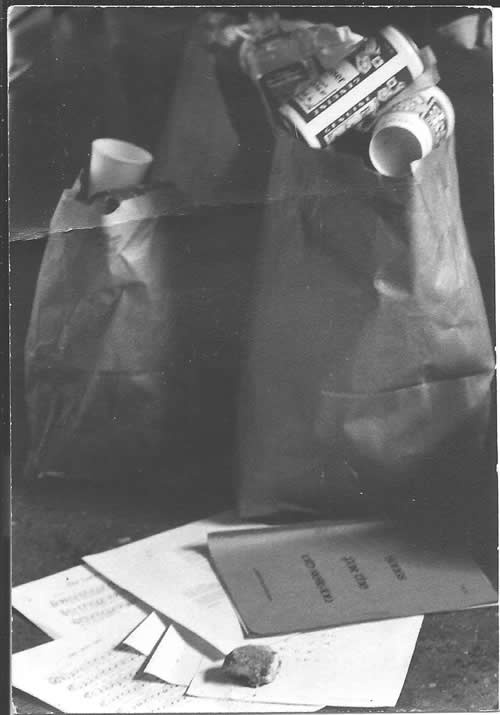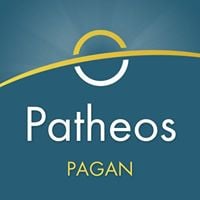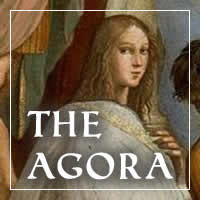
Something like Songs for the Old Religion could not happen in today’s Pagan world, because Paganism has changed and we have changed. In 1975 music was something everyone did, everyone shared, everyone wove into the fabric of their lives. Today, music – even Pagan music – is performed by professionals and bought by the rest of us. It’s expected to contain professional performances and good engineering. The idea of daring to produce something that honestly home-made, just for the love of it, is totally foreign now. Oh, there are still folk/acoustic musicians around, but I haven’t played at a Pagan gathering in years, because I can’t get anyone to play with me. All the acoustic musicians have drifted over to the SCA and can’t come to Pagan gatherings because they conflict with RenFaire and the latest War. Which is, to me, a huge and significant change: most of those who self-identify as Pagan choose other activities over involvement in their religion.
I’m asked if Pagan music was important in the 70’s. Well, not as such, though individual Witches who were also musicians could not help writing songs that expressed it — I wrote several myself, including The Sungod, which appears on the album. Folk music was crucial, because so many of the secrets and mysteries are encoded in old folk songs. Witch rituals were intended to have music, specific old songs for the Sabbats, Moons, and other occasions. Pagan music — Witches’ music as it was then — grew out of that. Gwydion was to my knowledge the first to compile and sell his music, and even then it was sold at first as sheet music, for other people to learn and perform among themselves. The album was an afterthought, the result of a serendipitous meeting between Gwydion and me.
Pagan musicians in particular ask me about the Pagan music scene of the time – who else was doing what we did, what clubs played Pagan music, how records got distributed, and so forth. Wow. They really have no idea. There was no ‘Pagan music scene’ in 1975; SFTOR started it. There were no Pagan clubs, though there were a couple of short-lived metaphysical coffee houses and of course the Bodhi Tree in Los Angeles which is as of this writing finally closing its doors, alas. I heard rumors that a Witches’ coffee house in Atlanta had live entertainment; we all thought that exciting if risky – just anyone could walk in off the street and make trouble! The music industry was all corporate and union-controlled, no indy labels as there are now and for which we should thank the Muses, so SFTOR could not be played on the air or sold in stores; we advertised it through a couple of Witch magazines and sold it entirely by mail order. We were, in effect, black-market.
You must understand that there was no ‘Pagan community’ for there to be a ‘scene’ in. There were Witches, period, and even we didn’t yet think of ourselves as a community. A movement, maybe. There were a few newsletters for Witches in both Britain and the U.S., but of course this was all long before the Internet. There was little contact with other Witches outside one’s own geographic area. A ‘festival’ was just a campout that might have 100 people at it, tops, last 3 or 4 days, and you heard about it either by invitation or word-of-mouth. The large, well-publicized festivals at which ‘Pagan performers’ could perform were years in the future, though the seeds were undeniably there.
What there was, was the tail end of the folk-music scene. Donovan and many other professional musicians did things that were overtly or covertly Old Religion — Crosby, Stills & Nash’s “Cathedral” is one, as is Bob Dylan’s “Shelter From the Storm.” The British folk group “Pentangle” was understandably popular among Witches, but so were most of the traditional folk performers. But music was much less stratified into producer/performers and consumers than it is now. It was shared. At any gathering, you could count on lots of people showing up with instruments and song sheets, eager to swap songs and sing together. Sitting around a fire singing happened at night after supper the way the (in my opinion, effing) drum circles do now. Music was not about fame & fortune, it was about sharing, it was about magic — it was about fun! And this wasn’t just at Witches’ parties & camp outs, but at everyone’s. It was just how young people socialized.
The rise of the Pagan music business is inextricably interwoven with the rise of the lavish Pagan festival. Today’s Pagan performers generally work the festival circuit, making at least part of their income by that and the CD sales it generates. But in 1975 it would never have occurred to any of us to make a profession of it; we all had regular jobs. If we had musical aspirations it was as folk singers, blues men, rock and rollers or even cabaret crooners; our identity as Witches was not part of our professional ambition. And anyway there was no place to perform Witch music — the summertime festival circuit didn’t exist yet. I think the first really big festival was Pan Pagan 1980, in Indiana. There were 600+ people there and it overwhelmed the site’s capacity and the organizers’ ability to handle things. There was no stage, performers, no costume party, and (huzzah) no all-night drum circle. I didn’t even take my guitar with me, as there was no room in the car. Neither did Gwydion; he was there to run a workshop.
I’m also asked – often — if we had any idea we were making history. No, we just wanted to make an album expressing our ideas of what Witch music ought to sound like. The first pressing of 1,000 copies of SFTOR sold out in about 3 months – and we were flabbergasted! There was a 2nd pressing on vinyl and then it went to cassette tape, which was so much easier & cheaper to produce and could be done at home, on demand. CAW, Gwydion’s heirs, did a limited release on vinyl for the 30th anniversary edition, but by then the original master had been lost; everything after the first couple of years has been dubbed from a 2nd generation tape. — And there’s your answer as to whether or not we were aware of how ‘historical’ this recording was: Gwydion lost the master.
To put a meaningful context on Songs for the Old Religion, look it up on the Web. At one site original 1975 LPs are selling for $300 – no idea where they got them. They describe it thus: “Rare private press 1975 hippy stoner wizard gypsy folk…” Farm Faves devotes a long, loving analysis to it, while at Rate Your Music, it’s described as “So bad it’s brilliant.”
Yeah. It was.

Patheos Pagan on Facebook.

the Agora on Facebook
The Rantin’ Raven is published on alternate Saturdays here on the Agora. Subscribe via RSS or e-mail!
Please use the links to the right to keep on top of activities here on the Agora as well as across the entire Patheos Pagan channel.

















